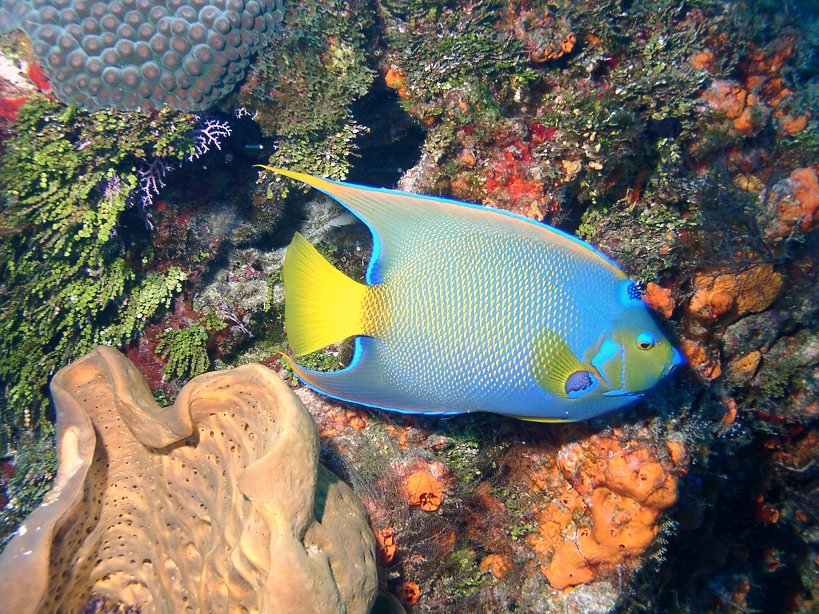Cozumel Underwater 4
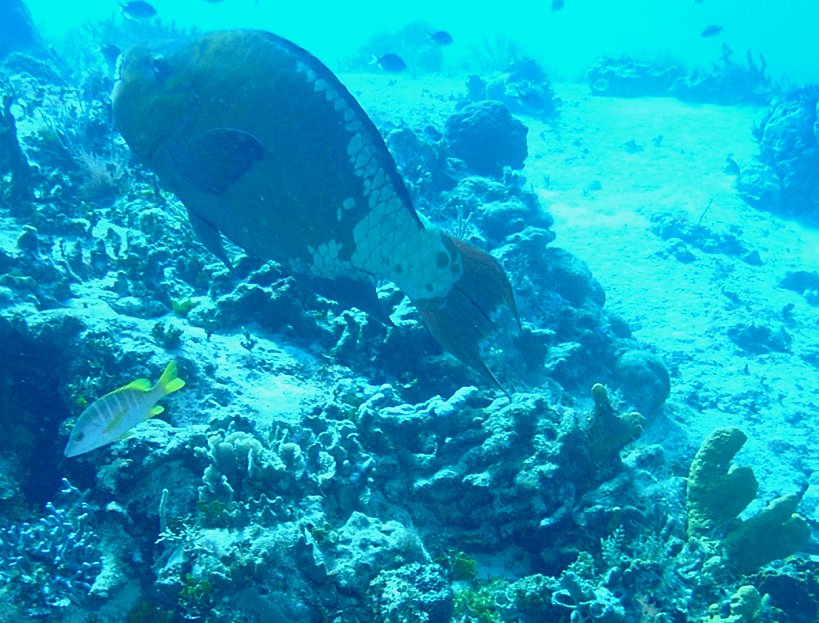
Just like our own Blackfish, large adults do not like to be approached. The small fish at the lower left is a Schoolmaster Lutjanus apodus.
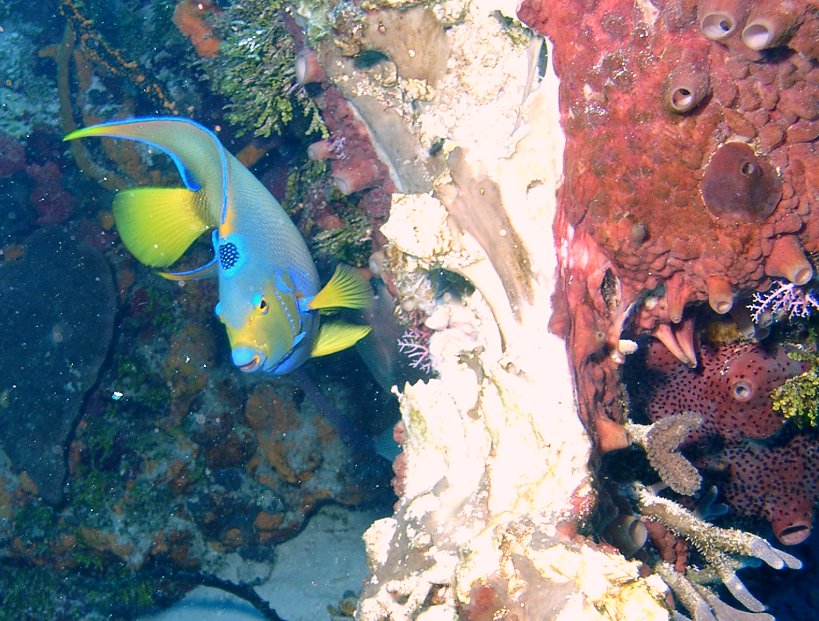
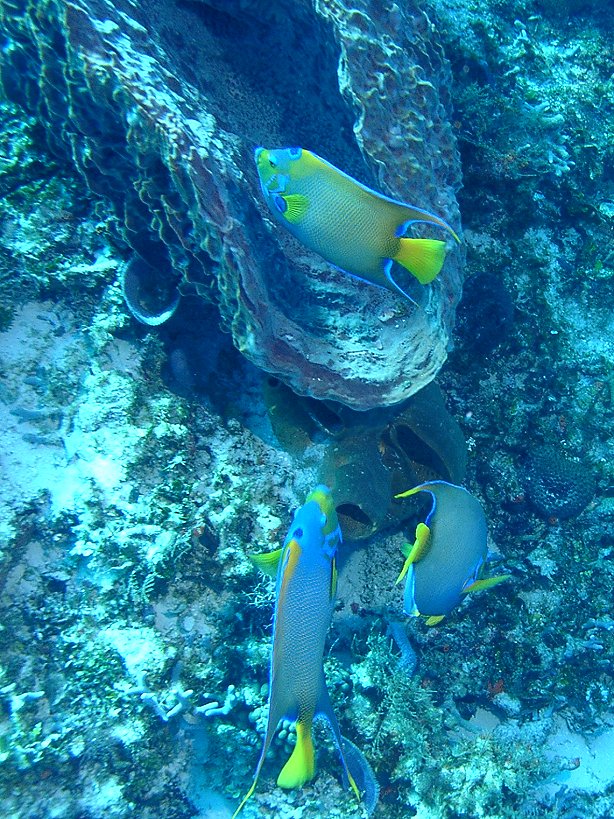


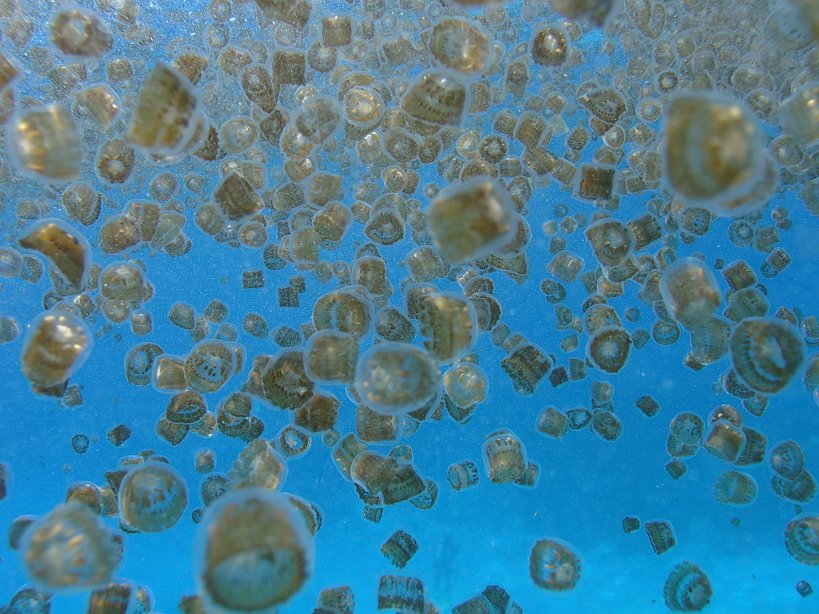

There aren't too many places in the tropics where pure white is actually camouflage. Related northern Tilefishes live much deeper, beyond the range of divers.
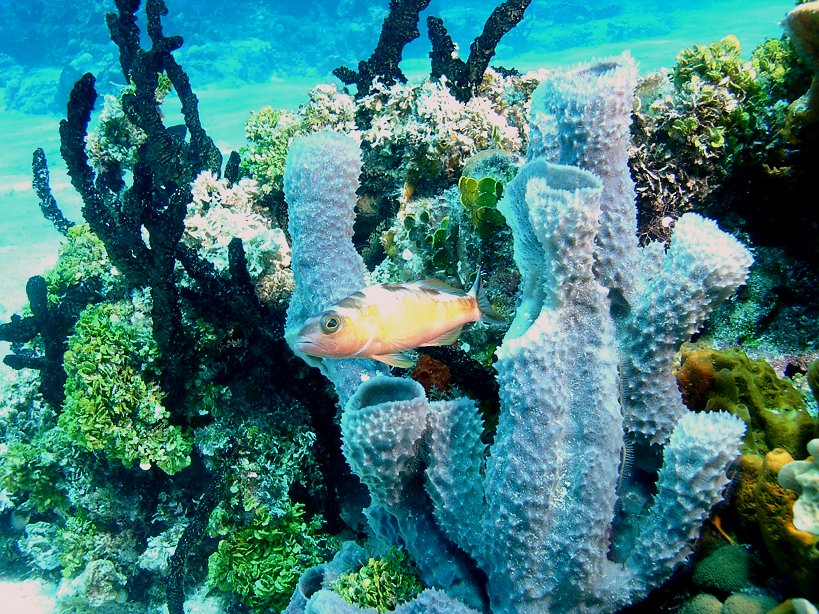
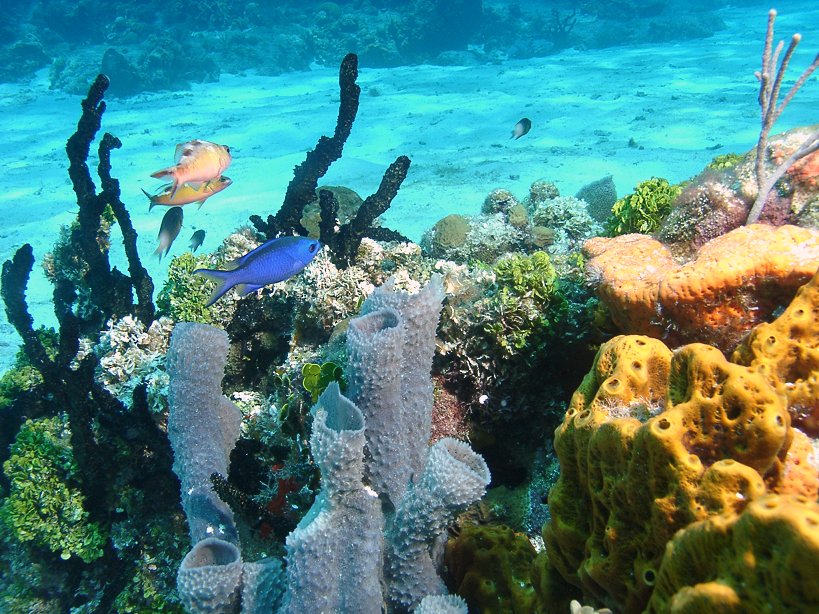
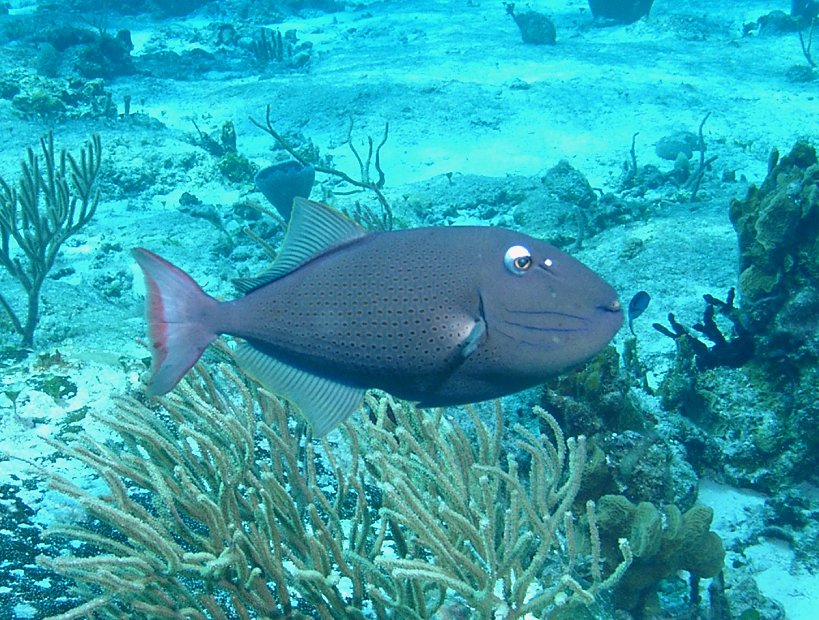

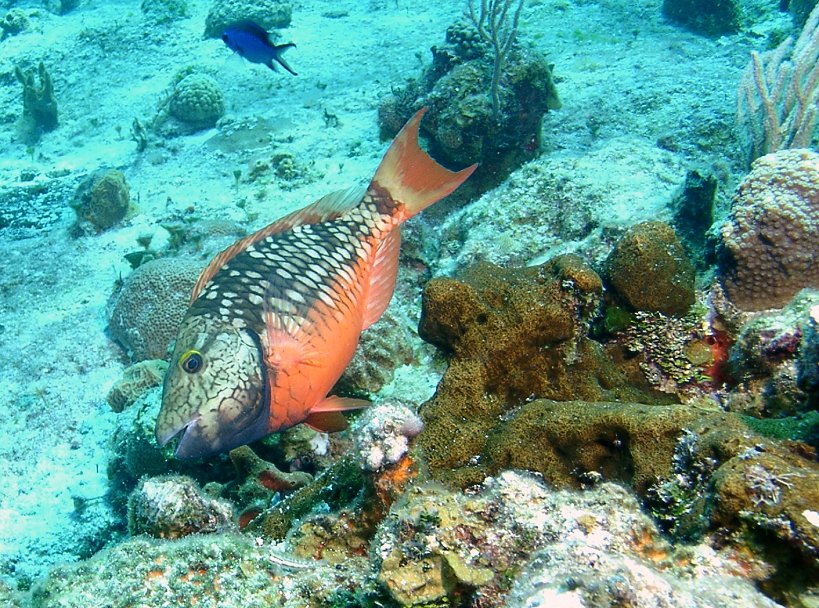

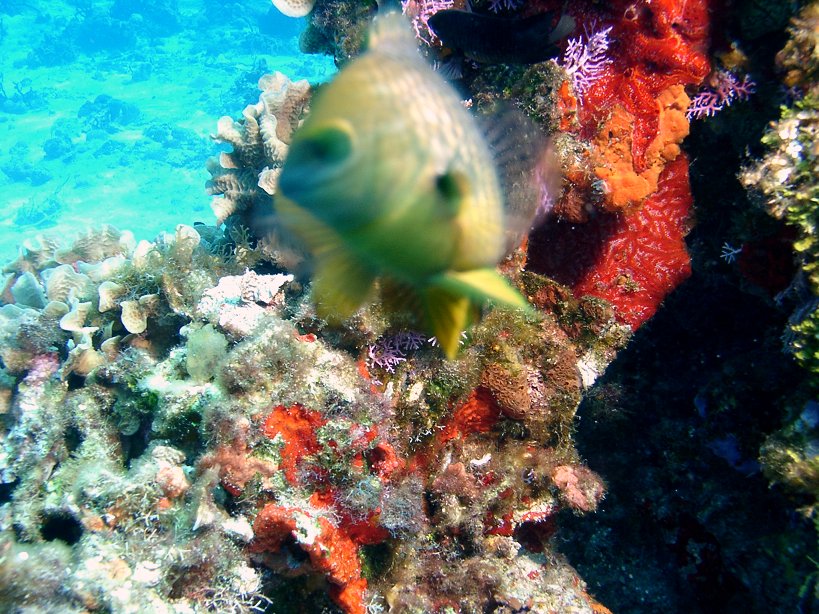
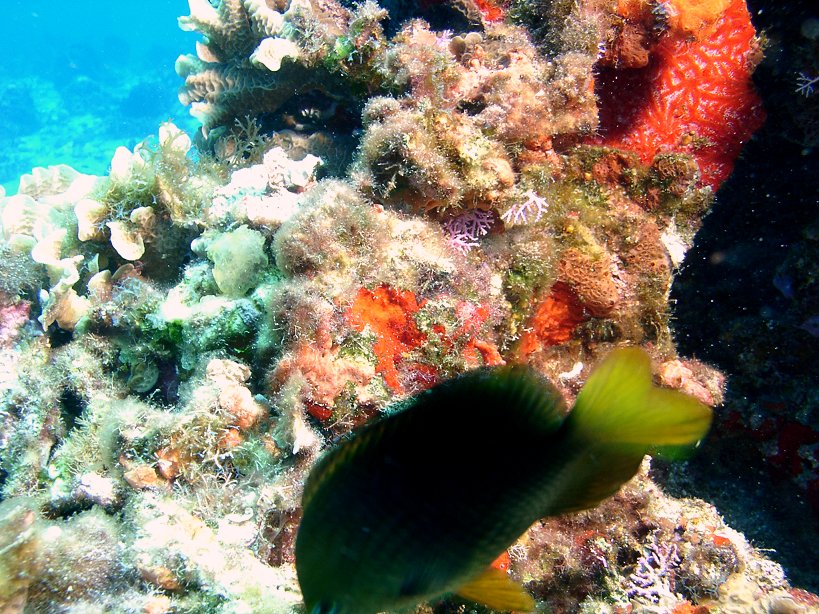
Unlike most reef fish, which eat the coral directly, Damselfish are farmers. They clear off a small patch of reef and grow algae on it, which they then feed on. They will defend their patch fearlessly - I have actually been bitten! ( It didn't hurt. )
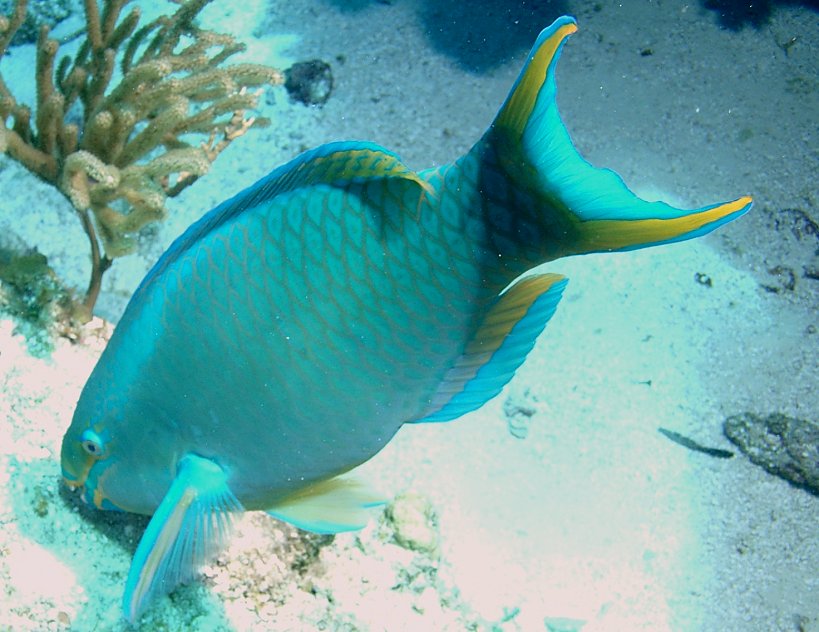
Eatin' coral, and poopin' beach sand. Yep.
Most of the fishes on the reef actually feed on the coral, gnawing on it all day, every day. One thing that you can deduce from this immediately is that coral must be a lot more resilient than some hysterical ecologists* would have you believe.
Does this mean it's ok for you to go bashing into it? Hardly. Always try not to touch or break the corals and sponges you see, but if you occasionally have to put a finger or two down on something solid, don't lose too much sleep over it.
I try never to touch anything on the reef because I don't know offhand which things sting and which ones don't, and some of them can really ruin your day!
* Not all ecologists are hysterical.
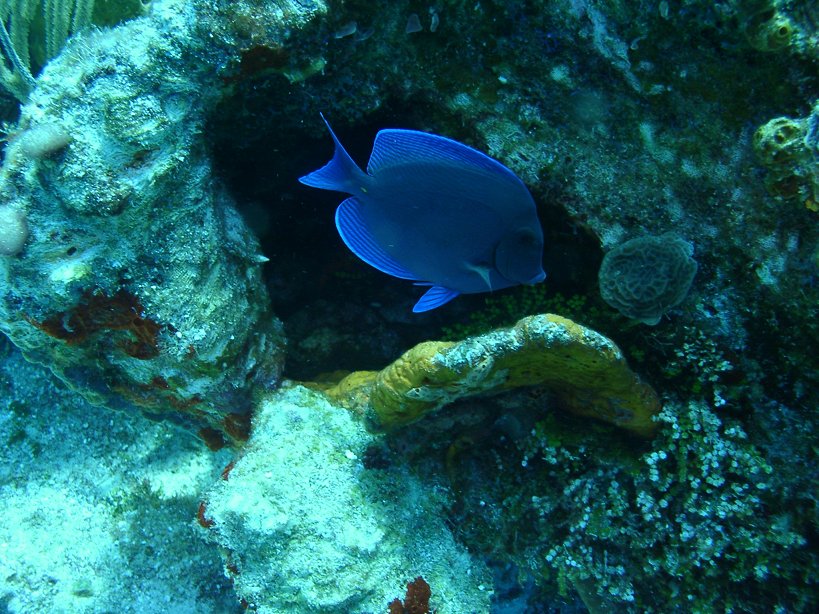

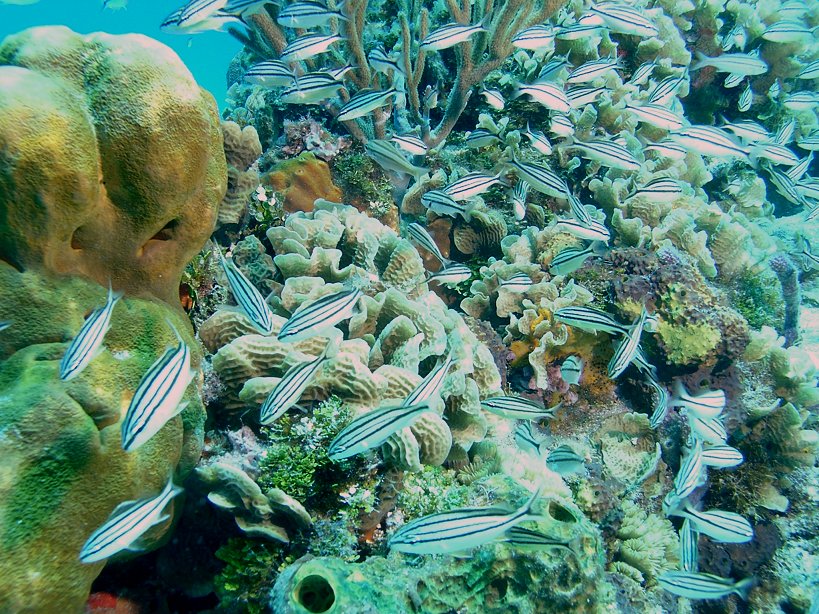
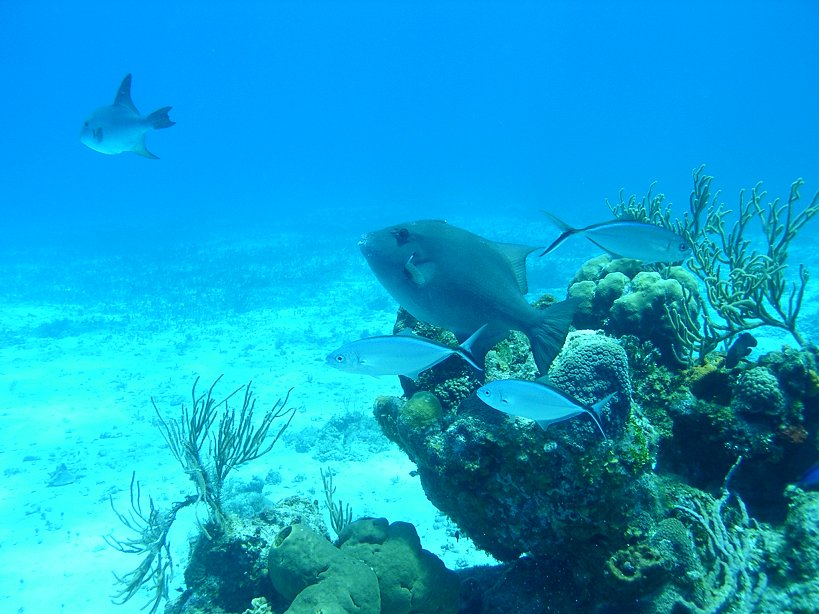

Notice the tufts of white bristles underneath.
Leave this critter alone.
Thanks to Dr Matt Landau - MLandau@stockton.edu
of Stockton University Biology Department
for identifying many of these creatures.

